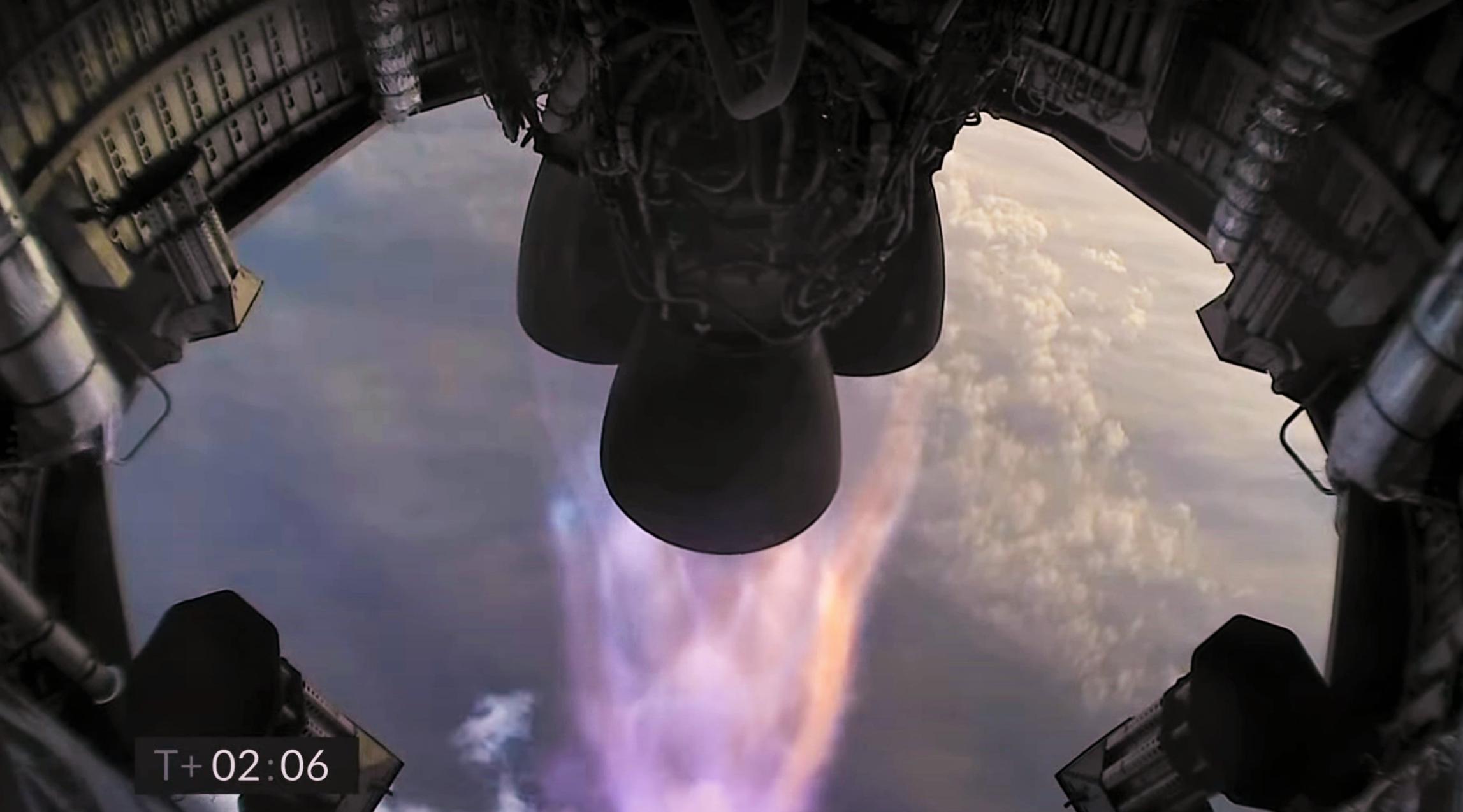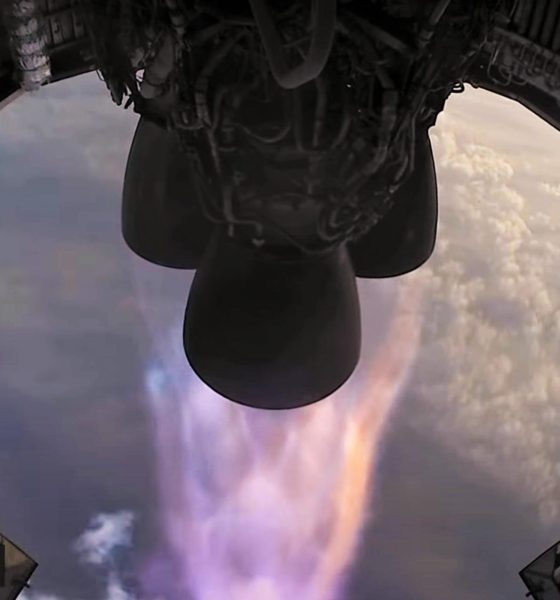

News
Elon Musk talks upgrades after SpaceX Starship launches, explodes in midair
SpaceX has completed its fourth Starship test flight in as many months, offering the latest glimpse into the often frustrating reality of a highly iterative, hardware-rich rocket development program.
Right on schedule, SpaceX Starship prototype serial number 11 (SN11) lifted off from Boca Chica, Texas at exactly 8am CDT (UTC-5) – all but completely cloaked in a thick layer of fog. While unfortunate for any unofficial observers (and possibly SpaceX’s own desire to gather video footage of a test flight), SpaceX has experience launching rockets (namely Falcon 9) in thick fog thanks to its Vandenberg Air Force Base launch site on the California coast.
As such, fog theoretically poses no fundamental threat to rockets like Starship, but SN11 still took the opportunity to explore new and exciting failure modes shortly before touchdown. CEO Elon Musk himself didn’t take long to weigh in and has even offered some details and a schedule for upgrades planned for SpaceX’s next-generation launch vehicle – upgrades hoped to alleviate whatever issues led to Starship SN11’s premature demise.
First and foremost, due to the fog, the general public saw virtually nothing throughout the launch attempt. Remote streaming cameras set up near SpaceX’s launch facilities – now, excitingly, with the company’s own permission – did manage to catch some level of detail, providing the bare minimum level of insight needed to speculate on SN11’s failed landing attempt.
Per an official webcast and NASASpaceflight’s unofficial “Danger-Close Camera,” installed a few hundred feet from the launch site with SpaceX’s permission, Starship lifted off at exactly 8am and had a seemingly nominal ascent, reaching a familiar 10 km (6.2 mi) apogee around four minutes later. SN11 then arced over onto its belly and free-fell for ~100 seconds. Aside from a few intermittent fires burning on some of the rocket’s three Raptor engines, not an uncommon sight since SN8 first flew, nothing appeared particularly out of the ordinary.
At T+5:49, however, things rapidly went wrong. Still belly-down, Starship SN11 attempted to reignite all three of its Raptor engines to propulsively flip into a vertical landing position. After at least one seemingly successful reignition, SpaceX immediately lost onboard video and telemetry feeds. Based on NASASpaceflight’s pad-adjacent camera, a substantial explosion followed one or two seconds after that attempted ignition, ending Starship SN11’s test flight around 20 seconds earlier than any of its three late siblings.
Debris began to visibly hit the ground another 5-10 seconds after that explosion was first heard, all but guaranteeing that Starship SN11 exploded in midair. At this time, it’s impossible to know what exactly went wrong, but there are two clear possibilities. Starship SN11 could have failed to reignite two or even all three Raptor engines, triggering onboard flight termination system (FTS) explosives designed to prevent the rocket from straying beyond a safe zone of operations. More likely, Starship suffered a substantial failure during that reignition and flip attempt, triggering an almost immediate explosion that tore the rocket apart around half a kilometer (~1500 ft) above the pad and landing zone.
Shortly after, Musk said that Raptor “engine #2 had issues on ascent” that were notable but not enough to explain a violent midair failure and confirmed that whatever went wrong came “shortly after landing burn start.”
Musk offers Starship upgrade schedule, details
Having suffered a failure a bit less than six minutes after launch, Starship SN11 – the fourth three-engine, high-altitude prototype – was ironically the farthest from a successful landing before something went wrong: one step forward, two steps back. While unfortunate, SpaceX still got some amount of data and uncovered one or several new failure modes – arguably the two of the most important primary goals of any developmental flight test program.
Further, Musk revealed that SpaceX intends to complete and roll Starship SN15 to the launch pad just “a few days” from now – certainly earlier than expected. While the SpaceX CEO didn’t go much into detail, he reaffirmed that SN15 would bring substantial upgrades, stating that “it has hundreds of design improvements across structures, avionics/software, & engine[s].”
Musk also touched on SpaceX’s near-term plans after SN15’s upgrade path, confirming that Starship prototypes from SN20 onwards will be “orbit-capable” with even more improvements. That seemingly delineates three clear ‘blocks’ of Starship prototypes, beginning with SN8 through SN11, proceeding with SN15 through SN19, and (nominally) gearing up for true orbital-class test flights with prototype SN20 and its successors. All told, SN11’s midair demise appears likely to be just a small blip in front of a jam-packed, well-structured series of Starship upgrades and flight tests just over the horizon.

News
Tesla FSD fleet is nearing 7 billion total miles, including 2.5 billion city miles
As can be seen on Tesla’s official FSD webpage, vehicles equipped with the system have now navigated over 6.99 billion miles.

Tesla’s Full Self-Driving (Supervised) fleet is closing in on almost 7 billion total miles driven, as per data posted by the company on its official FSD webpage.
These figures hint at the massive scale of data fueling Tesla’s rapid FSD improvements, which have been quite notable as of late.
FSD mileage milestones
As can be seen on Tesla’s official FSD webpage, vehicles equipped with the system have now navigated over 6.99 billion miles. Tesla owner and avid FSD tester Whole Mars Catalog also shared a screenshot indicating that from the nearly 7 billion miles traveled by the FSD fleet, more than 2.5 billion miles were driven inside cities.
City miles are particularly valuable for complex urban scenarios like unprotected turns, pedestrian interactions, and traffic lights. This is also the difference-maker for FSD, as only complex solutions, such as Waymo’s self-driving taxis, operate similarly on inner-city streets. And even then, incidents such as the San Francisco blackouts have proven challenging for sensor-rich vehicles like Waymos.
Tesla’s data edge
Tesla has a number of advantages in the autonomous vehicle sector, one of which is the size of its fleet and the number of vehicles training FSD on real-world roads. Tesla’s nearly 7 billion FSD miles then allow the company to roll out updates that make its vehicles behave like they are being driven by experienced drivers, even if they are operating on their own.
So notable are Tesla’s improvements to FSD that NVIDIA Director of Robotics Jim Fan, after experiencing FSD v14, noted that the system is the first AI that passes what he described as a “Physical Turing Test.”
“Despite knowing exactly how robot learning works, I still find it magical watching the steering wheel turn by itself. First it feels surreal, next it becomes routine. Then, like the smartphone, taking it away actively hurts. This is how humanity gets rewired and glued to god-like technologies,” Fan wrote in a post on X.
News
Tesla starts showing how FSD will change lives in Europe
Local officials tested the system on narrow country roads and were impressed by FSD’s smooth, human-like driving, with some calling the service a game-changer for everyday life in areas that are far from urban centers.

Tesla has launched Europe’s first public shuttle service using Full Self-Driving (Supervised) in the rural Eifelkreis Bitburg-Prüm region of Germany, demonstrating how the technology can restore independence and mobility for people who struggle with limited transport options.
Local officials tested the system on narrow country roads and were impressed by FSD’s smooth, human-like driving, with some calling the service a game-changer for everyday life in areas that are far from urban centers.
Officials see real impact on rural residents
Arzfeld Mayor Johannes Kuhl and District Administrator Andreas Kruppert personally tested the Tesla shuttle service. This allowed them to see just how well FSD navigated winding lanes and rural roads confidently. Kruppert said, “Autonomous driving sounds like science fiction to many, but we simply see here that it works totally well in rural regions too.” Kuhl, for his part, also noted that FSD “feels like a very experienced driver.”
The pilot complements the area’s “Citizen Bus” program, which provides on-demand rides for elderly residents who can no longer drive themselves. Tesla Europe shared a video of a demonstration of the service, highlighting how FSD gives people their freedom back, even in places where public transport is not as prevalent.
What the Ministry for Economic Affairs and Transport says
Rhineland-Palatinate’s Minister Daniela Schmitt supported the project, praising the collaboration that made this “first of its kind in Europe” possible. As per the ministry, the rural rollout for the service shows FSD’s potential beyond major cities, and it delivers tangible benefits like grocery runs, doctor visits, and social connections for isolated residents.
“Reliable and flexible mobility is especially vital in rural areas. With the launch of a shuttle service using self-driving vehicles (FSD supervised) by Tesla in the Eifelkreis Bitburg-Prüm, an innovative pilot project is now getting underway that complements local community bus services. It is the first project of its kind in Europe.
“The result is a real gain for rural mobility: greater accessibility, more flexibility and tangible benefits for everyday life. A strong signal for innovation, cooperation and future-oriented mobility beyond urban centers,” the ministry wrote in a LinkedIn post.
News
Tesla China quietly posts Robotaxi-related job listing
Tesla China is currently seeking a Low Voltage Electrical Engineer to work on circuit board design for the company’s autonomous vehicles.

Tesla has posted a new job listing in Shanghai explicitly tied to its Robotaxi program, fueling speculation that the company is preparing to launch its dedicated autonomous ride-hailing service in China.
As noted in the listing, Tesla China is currently seeking a Low Voltage Electrical Engineer to work on circuit board design for the company’s autonomous vehicles.
Robotaxi-specific role
The listing, which was shared on social media platform X by industry watcher @tslaming, suggested that Tesla China is looking to fill the role urgently. The job listing itself specifically mentions that the person hired for the role will be working on the Low Voltage Hardware team, which would design the circuit boards that would serve as the nervous system of the Robotaxi.
Key tasks for the role, as indicated in the job listing, include collaboration with PCB layout, firmware, mechanical, program management, and validation teams, among other responsibilities. The role is based in Shanghai.
China Robotaxi launch
China represents a massive potential market for robotaxis, with its dense urban centers and supportive policies in select cities. Tesla has limited permission to roll out FSD in the country, though despite this, its vehicles have been hailed as among the best in the market when it comes to autonomous features. So far, at least, it appears that China supports Tesla’s FSD and Robotaxi rollout.
This was hinted at in November, when Tesla brought the Cybercab to the 8th China International Import Expo (CIIE) in Shanghai, marking the first time that the autonomous two-seater was brought to the Asia-Pacific region. The vehicle, despite not having a release date in China, received a significant amount of interest among the event’s attendees.








